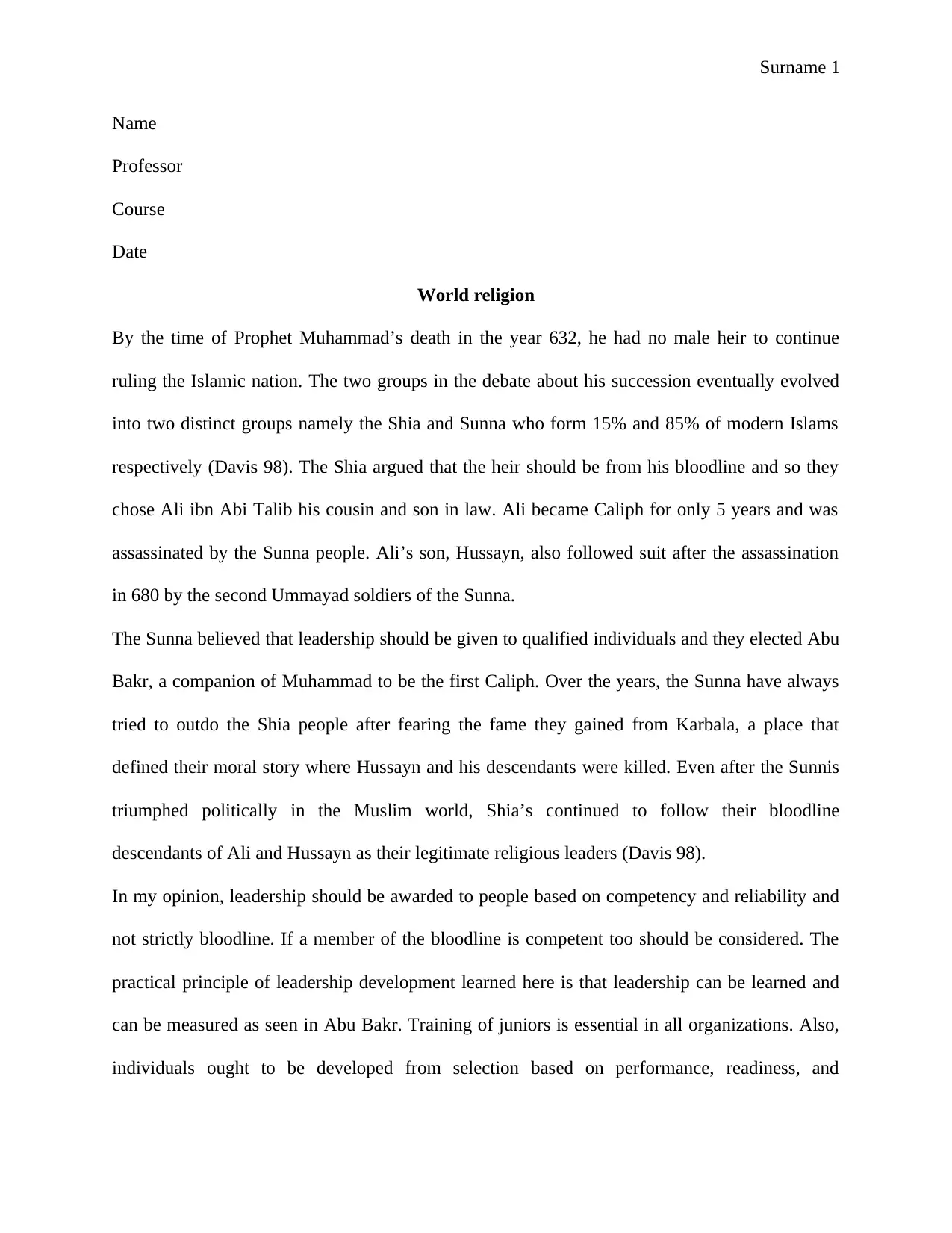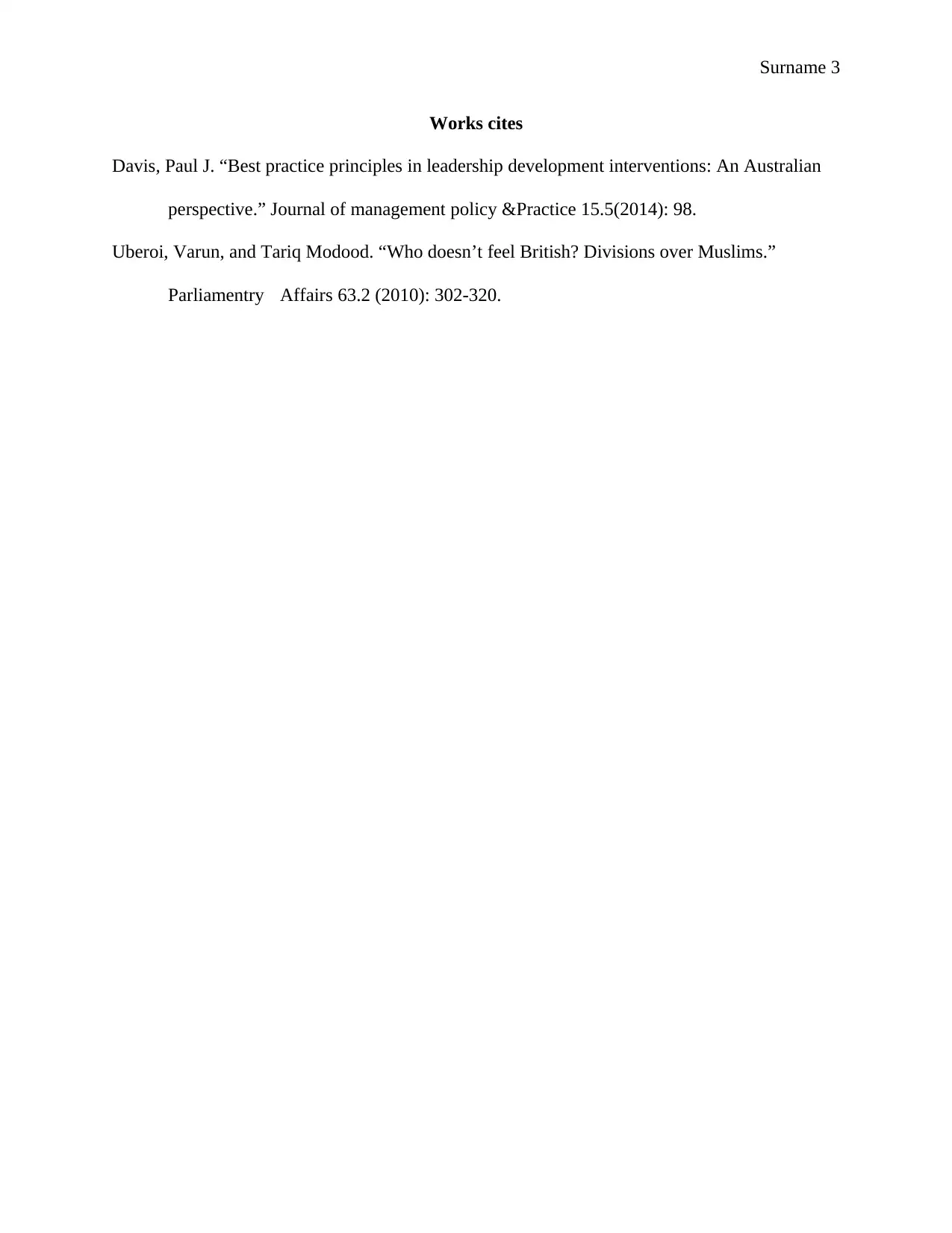World Religion: A Comparison of Shia and Sunni Leadership
VerifiedAdded on 2022/08/22
|3
|411
|19
Report
AI Summary
This report examines the historical and leadership differences between Shia and Sunni Islam. It begins by outlining the origins of the split following the death of Prophet Muhammad and the subsequent debates over succession, highlighting the differing perspectives of the Shia, who advocated for leadership through bloodline, and the Sunni, who prioritized qualified individuals. The report discusses the key figures and events, including Ali ibn Abi Talib, Abu Bakr, and the Battle of Karbala, which shaped the two groups' identities. Furthermore, the report emphasizes the importance of leadership development, competency, and reliability, drawing parallels to modern organizational practices. The author's opinion on leadership selection is also included, advocating for merit-based selection, while acknowledging the potential of bloodline members. The report concludes by mentioning the importance of training and senior leadership visibility.
1 out of 3




![[object Object]](/_next/static/media/star-bottom.7253800d.svg)